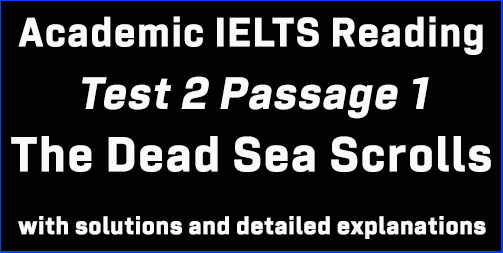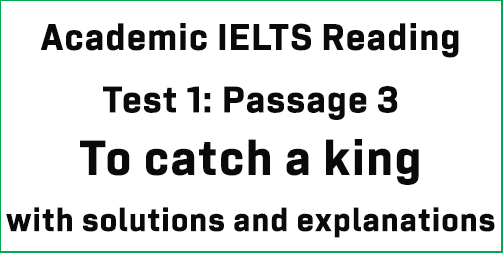IELTS Reading: A smart and the best strategy to handle TRUE, FALSE, NOT GIVEN or, YES, NO, NOT GIVEN
In the IELTS Reading exam, students often face the problem of dealing with different types of questions. One of these questions is YES, NO, NOT GIVEN which is also known as TRUE, FALSE, NO INFORMATION. This is a question where many students, who have weaknesses in English reading, become utterly confused. Especially it becomes difficult to decide on whether the answer should be NO or NOT GIVEN. In this post, I’ll provide a simple yet the best powerful trick to solve this problem. This may be helpful for everyone if you think about this question in a different way.

I’ve named this technique method 3210.
The name suggests that the answer has some sort of relation to numbers. Actually, there is a tiny trick that we can apply here.
If you look at any YES/ NO/ NOT GIVEN question, you may find some individual parts.
We shall try to break the question into 3 individual parts and then try to find them in the passage.
If we can match all the 3, the answer will be YES.
And, if we can match 2 parts, it will be NO.
In the same way, if we find only 1 or no match, the answer will be NOT GIVEN.
TRUE: if all 3 parts are found.
FALSE: if any 2 of the 3 parts are found.
NOT GIVEN: if any 1 of the 3 or no parts is found. Also, if the most important information of the question is not discussed in the passage, the answer will be NOT GIVEN.
Let’s have a look at it in detail and apply it to some real IELTS Reading questions.
Find a copy of CAMBRIDGE 10 and open it on page 19. Here, you will find the first set of questions of READING TEST 1 PASSAGE 1 (Stepwells), which are TRUE/FALSE/NOT GIVEN. I know many of you know about finding answers from a keyword. But, this might not work for many students, who just know how to read, nothing more. So, how can we find the answer more easily?
The first question says,
“Examples of ancient stepwells can be found all over the world.”
Let’s break down the question.
We can break it like the following pattern:
Examples of ancient stepwells can be found all over the world.
Now, let’s read the passage. As this is the first set of questions, we shall look at the first paragraph of the passage.
Phrases like “During the sixth and seventh centuries” indicate that the stepwells are ancient. So, we can give a tick (√) for the first part of the question.
Line 7 of the second paragraph says, “Most stepwells are found…. …. … .. ”. This confirms that the setpwells can be found. So, we can give a tick (√) for the second part of the question.
But, interestingly, Line 1 of the second paragraph says, “Unique to this region”. Then, lines 7 to 14 indicate that the step wells are clustered around Gujrat, Rajasthan, and Delhi, all of which are located in India. So, this information contradicts or doesn’t match the third part of the question. So, we can give a cross (X) for the third part of the question.
Now, we have two ticks(√) and one cross(X) for this question. So, the answer is FALSE.
Let’s see if it works for the other questions.
- Stepwells had a range of functions, in addition tothose related to water collection.
Clues: Line 5-10 of Para 1 matches with parts 1 and 3 in the question. “method of gaining access to clean, fresh groundwater during the dry season for drinking, bathing, watering animals and irrigation. However, the significance of this invention – the stepwell – goes beyond its utilitarian application.” It proves that Stepwells had the main function related to water collection. So, we can give two ticks(√).
Line 12-14 of Para 2 says, “Some were located in or near villages as public spaces for the community; others were positioned beside roads as resting places for travellers.” So, this is a clear match to part 2 in the question. So, we can give one tick(√).
Three ticks (√) = TRUE.
- The few existing stepwells in Delhi are more attractive than those found elsewhere.
Clues: Part 1 and Part 3 of the question can be found in the second paragraph of the passage. But, remember that the 3rd part has the word “than” which means there is a comparison. If you search the 2nd paragraph, you won’t find any comparison regarding the attractiveness of the step-wells. So, technically, we can find a single match in the passage with the 1st part of the question only. So, we can give only one tick(√).
One tick (√) = NOT GIVEN.
- It took workers many years to build the stone steps characteristic of stepwells.
Clues: Scanning the third and fourth paragraphs, we find a match with the 3rd part, “As their name suggests, stepwells comprise a series of stone steps descending from the ground level … . .. . . ..”. But there is no mention of the 1st and 2nd part in the paragraphs. So, again, we can give only one tick(√).
One tick (√) = NOT GIVEN.
- The number of steps above the water level in a stepwell altered during the course of a year.
Clues: Lines 6-9 in Paragraph 3 clearly says, “When the water level was high, the user needed only to descend a few steps to reach it; when it was low, several levels would have to be negotiated.”
Here, the high and low levels of water indicate the changes happening during the course of a year. “To descend” and “negotiated” means the changes of position of the steps. Thus, all the parts match the passage. So, we can give three ticks (√).
Three ticks (√) = TRUE.
Thus, you can easily match all the key information with the question to match the three parts. It may be difficult for you at first. Just keep practicing; after doing it a couple of times, you will become used to it. It really worked for me and I made it easier by practicing from most of the Reading Passages 1 from different Cambridge IELTS books. Reading Passage 1 generally focuses on easier passages. So, you can start from here.
Hope, this trick helps you.
6 IELTS Preparation Tips for Reading Section
IELTS Reading: 10 steps which helped me to score 8.0 in Reading




Nice tips – easy to work on… I will try this on my practice test. this question type and Matching heading have been my worst nightmare. Can you do something like this for matching heading questions?
Thank you.
You’ll soon find a post on Matching headings !!!
Hi admin, have you posted these type strategy on heading of paragraphs?